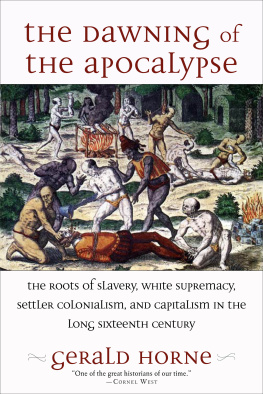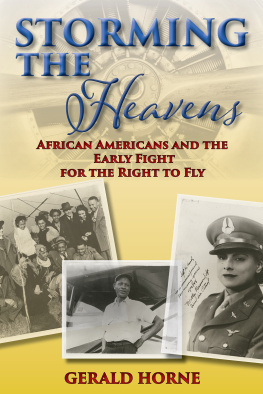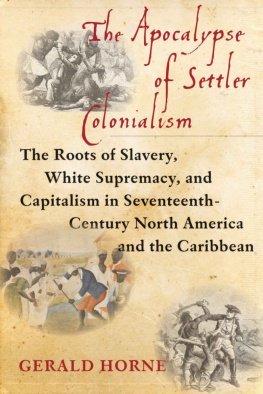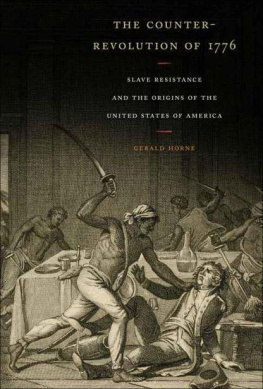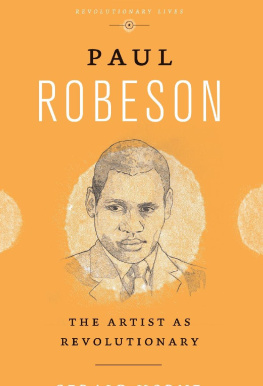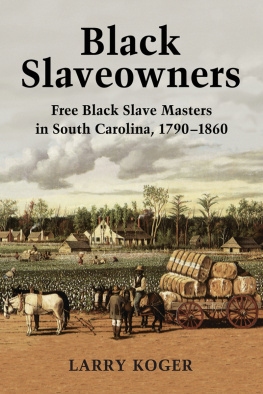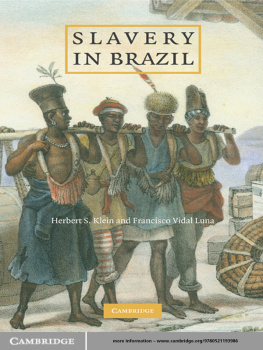The Deepest South
The Deepest South
The United States, Brazil, and the
African Slave Trade
Gerald Horne

NEW YORK UNIVERSITY PRESS
New York and London
www.nyupress.org
2007 by New York University
All rights reserved
Library of Congress Cataloging-in-Publication Data
Horne, Gerald.
The deepest south : the United States, Brazil, and the African slave trade / Gerald Horne.
p. cm.
Includes bibliographical references and index.
ISBN-13: 978-0-8147-3688-3 (cloth : alk. paper)
ISBN-10: 0-8147-3688-2 (cloth : alk. paper)
ISBN-13: 978-0-8147-3689-0 (pbk. : alk. paper)
ISBN-10: 0-8147-3689-0 (pbk. : alk. paper) 1. Slave-tradeAmericaHistory19th century. 2. Slavery
United StatesHistory19th century. 3. SlaveryBrazil
History19th century. I. Title.
HT1048.H67 2006
306.362dc22 2006029836
New York University Press books are printed on acid-free paper, and their binding materials are chosen for strength and durability.
Manufactured in the United States of America
c 10 9 8 7 6 5 4 3 2 1
p 10 9 8 7 6 5 4 3 2 1
Contents
Introduction
This book is about the relationship between the two great slave empires of the 19th centurythe U.S. and Brazilin the context of the African Slave Trade, with the accent decidedly on North America. This is not a book about slavery in Brazil; though the narrative engages four continents, the primary focus is on the U.S., more specifically, the role of U.S. nationals as slave traders and sojourners in Brazil; i.e., this book is also a social history about the impact of Brazil on the U.S. It is very much a story that involves Brazil (and Africa) in the eyes of the U.S.and not vice versa, and it is very much a story about the role of U.S. nationals in the African Slave Trade. It is also a story about the continuing rivalry between London and Washington that had exploded in war in 1812 and then festered as the U.K. abolished slavery in the Empire in the 1830s.
This book argues that U.S. slavery is better understood in hemispheric termsthe Slave South saw in an alliance with Brazil a formidable hedge against a future relationship with the North and, for that matter, a hedge against continuing pressure from London to abolish slavery, a hedge that could mean triumph in a Civil War, if need be.
Two leading characters in these pages are former Virginia Governor, Henry WiseJohn Browns executionerand Matthew Fontaine Maury, a Virginian of a stature comparable to Robert E. Lee and Stonewall Jackson. As Minister to Brazil, Wise crusaded vigorously against the illicit slave trade to Brazil, while Maury advocated strongly for deporting enslaved U.S. Negroes to the Amazon for the purpose of developing this region; he was also part of a cabal that had designs on seizing the Amazon from Brazil: their ostensibly separate initiatives are best comprehended in unison, i.e., if Brazil could draw upon the labor of enslaved African-Americans, there would be no need to draw upon the illicit trade, which was dominated by forces in the U.S. Northeast and their lust for Brazilian territory was of a piece with their boundless expansion westward in North America. This was one more source of regional tension that was to explode in Civil War. Likewise, the flood of U.S. nationals who arrived in Brazil on their way to the California goldfields got a glimpse of a brutal slavery that enhanced abolitionist sentiment and also exacerbated regional tensions. This relationship with Brazil was an aspect of a larger phenomenon: the blurring of citizenship boundaries as slavers changed flags in midocean routinely; those who sought to profit from the slave trade often thought that U.S. nationality provided protection and altered citizenship accordingly; diplomats in foreign capitals often acted on behalf of more than one nation; at times it seemed that slave trading was the prime preoccupation of certain diplomats, notablythough not exclusivelythose of Portugal serving in New York, who advocated kidnapping Africans and compelling them to be American, albeit enslaved. This frayed idea of citizenship contributed to thinking in the Slave South that was evolving away from allegiance to Washington and toward a firmer relationship with Brazil.
Contours of the African Slave Trade
Between 1500 and 1800, more Africans than Europeans arrived in the Americas,
Yet despite the length and breadth of the era of the African Slave Trade, more than 40 percent made this perilous voyage in the ninety years prior to final suppression in 1867,
Hence, historians estimate the Brazilian slave population around 1820 to be two million, i.e., two-thirds of the countrys total population. Thus, to gain a fuller understanding of American slavery, we must examine the U.S. and Brazil tie, particularly since the latter nation provided succor for slavery in the former.
As W. E. B. Du Bois observed, the American slave tradei.e., that of the western hemisphereduring its busiest and most profitable stage came to be carried on principally by United States capital, in United States ships, officered by United States citizens, and under the United States flag.
This Brazilian slave trade as a whole was more profitable than that of
Deport U.S. Negroes to Brazil?
Those in the U.S. in the 19th century who advocated on behalf of an African Slave Trade that was illegal represented the most disunionist and pro-slavery faction of secessionists; indeed, a significant percentage of secessionists in the Lower South actively promoted or sympathized with the slave trade cause on the eve of disunion. This trend lay at the forefront of slavery expansionism and southern nationalism.
The most articulate and influential advocate of a Brazil strategy was the celebrated Virginian, Matthew Fontaine Mauryrenowned scientist and powerful Confederate, who ranks in the states annals alongside Robert E. Lee. He saw the Amazon famously as the safety-valve of the Union and envisioned deporting U.S. Negroes (accompanied by slave
Maury was among many in the U.S. who cast a ravenous eye on Brazilian territory. There was a continuity of interest among those who wanted to seize land in South America and those who wanted to ship enslaved Africans from the U.S. to this continentwith the former accompanying the latter as this aggression was being consummated. Strikingly, as thousands of U.S. nationals traveled by ship to Rio on their way to California during the 184850 Gold Rush, a number of them scrutinized carefully the military defenses of this South American giant.
The idea of deporting U.S. Negroes to the Amazonchampioned by Maurywas gaining traction, even as the Civil War proceeded. In
A few years earlier, in 1858, a group of Republican leaders from the border states and the West introduced legislation to subsidize black colonization in Latin America in an attempt to rebut the Democratic image of the Republicans as proponents of Africanization of the territories. in the border states especially, they added, espousing colonization was essential to building a Republican Party base among poor whites.
Undeterred, Washington queried a number of Latin American nations within Spains sphere of influence about accepting deported U.S. Negroes. But Madrids man in Haiti warned sternly that their presence would be a danger to those of European descent in Santo Domingo and could foment countless local and global conflicts.
Even after the Emancipation Proclamation, Londons man in Washington reported that the President of the United States sent for me and told me that he had been for some time anxious to speak to me in
Next page

